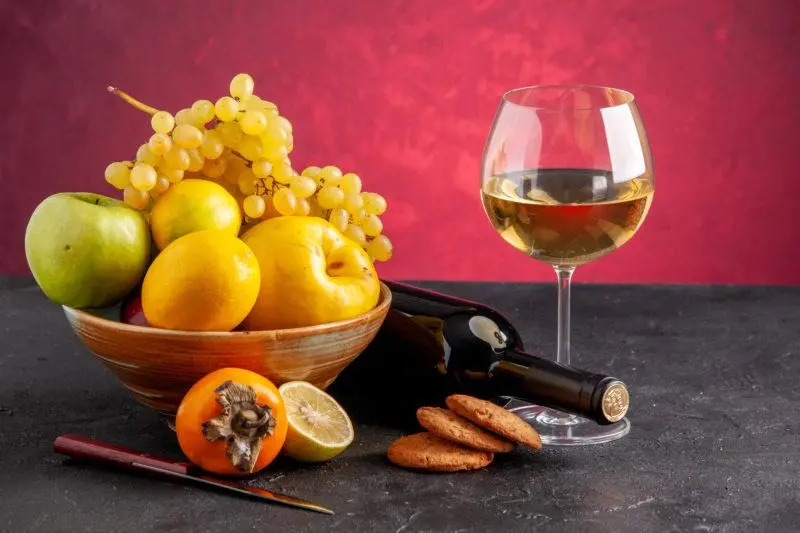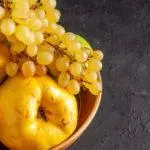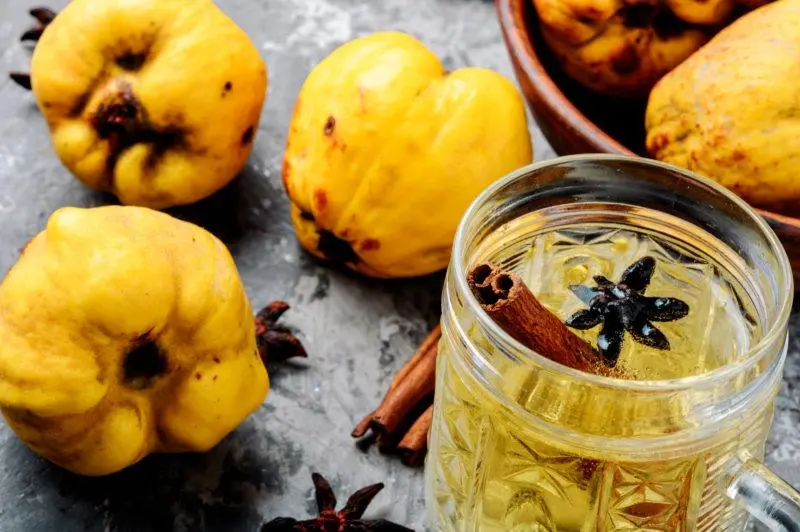Contents
No matter what anyone says, quince is an amazing fruit that perfectly reveals itself in various alcohols, including wine. Yes, it is difficult to extract juice from this fruit. Yes, it has far from ideal acidity and sugar content for winemaking, it is too tart, the wine clarifies for a long time and is not stored very well. But the taste, but the aroma – it’s just divine! In general, comrades, quince wine is worth making – at least for the sake of experiment!
Quince-based alcoholic drinks are not a new invention at all. For example, in Serbia, the original brandy made from this fruit, dunevacha, is widespread, which I will definitely write about sometime in the future; quince has long been used for liquors and liqueurs, the recipes of which were recently outlined by signor Gudimov in this article. There are also several classic recipes for quince wine – although it is difficult to make such a drink at home, it is quite feasible, which, in fact, we will do.

The main problems of quince in winemaking are a relatively low content of sugar, useful acids and high astringency. By the way, in these your Internet they write that “fresh quince is not edible, it is too viscous and bitter in taste“. Probably, these words belong to those unfortunate people who have never tried to eat cognac with ripe quince – in my opinion, a delicious combination! We can easily cope with these nuances through such simple additions as sugar, water and citric or special tartaric acid. But with another problem – a high density of fruits, which makes it difficult to get quince juice – you will have to tinker. But still, solutions exist – from a juicer or preheating fruit to a pectinase enzyme that breaks down fibers. In general, everything is solved!
A simple recipe for homemade quince wine on the “savages”
A simple recipe, but you will definitely need special equipment – a powerful juicer, an apple press, or in extreme cases – a drill with a clean mixer nozzle and a few thick rags through which you can squeeze the juice. Quince wine is not made according to the “red” technology, with pomace, because the latter contains a lot of pectin, which, during fermentation, turns into methyl alcohol – an impurity that is completely superfluous in alcohol. So in any case, the juice will have to be extracted.
It is best if not fresh, just picked quince is used for winemaking, but one that has already had time to lie down – “to ripen”. During ripening, the pulp of the fruit will soften, the sugar content will increase, and pectins and tannins, on the contrary, will become smaller. Fruits need to ripen in the cellar, lined with straw, early varieties – 2-3 weeks, and late, autumn – up to 2 months. Quince can also be kept in the refrigerator – it may well lie for more than a month if each “apple” is separately wrapped in thick paper.
So, to make quince wine, we need:

- quince fruits – 8.5 kg
- water – 4.5 l
- sugar – 2 kg
- lemon juice (optional)
According to this recipe, we should get a practically dry wine with a strength of about 11-13 degrees, light straw color, with a delicate, slightly tart taste and a bright aroma of quince.
- Do not wash the quince, otherwise we will wash off the wild yeast that should ferment the drink for us. Frankly dirty places can be wiped with a cloth. Cut out seeds, ponytails and the entire inner part from fruits – because of it, the drink can become too viscous, “slimy” and acquire an unpleasant aroma.
- Now, from the prepared fruits, you need to extract the juice in any way possible. If you don’t have a juicer or a press, then simply pass the pulp through a meat grinder or grind it into porridge with a construction mixer, and then squeeze it manually through several layers of gauze, or better, a thin cloth. Make sure that the pulp is not too long in the open air – this darkens the quince, like apples, which can spoil the final color of the drink.
- Add 0.5 kg of sugar to the resulting juice, mix well and leave for 2-3 days in a wide-mouthed dish covered with gauze. We need to get lazy wild yeast to work, and for this they need oxygen and the right temperature – in the region of 18-23 degrees. Once every few hours, the wort needs to be stirred – so that the foam cap that appears on it does not sour and mold. When the juice is already fermenting well – it forms bubbles, smells characteristically – you can proceed to the next step.
- Pour the juice into a large bottle, add water and sugar – all this mass should take no more than 3/4 of the volume of the vessel. You can and even need to try the must – if there is not enough acid in it, you must definitely add lemon or special tartaric acid sold in wineries, if the taste is not very sweet – you can immediately add a little more sugar. As soon as the wort is ready, you need to put a water seal on the container and rearrange it in a dark, warm place for primary fermentation.
- Rapid fermentation, depending on the temperature, the chemical composition of the must and many other factors, will last from two weeks to one and a half months. You will be able to determine that this stage of making quince wine is over by the precipitation of a dense sediment, the clarification of the liquid and the fact that the water seal has stopped bubbling. Now the young wine needs to be decanted – removed from the sediment with a straw – and poured into another, smaller container by 90-95% of the volume. The bottle needs to be moved to a cool place – for example, a dry basement – for quiet fermentation.
In addition to ordinary quince wines, sparkling wines are also excellent. You can put a couple of bottles of quince “champagne” right after the end of rapid fermentation – I wrote in detail about all the nuances of making homemade wines “with bubbles” in this article. You can also make original quince cider using the recipes from another article – only the sugar content needs to be adjusted, taking into account that quince is less sweet than apples.
- Quiet fermentation will continue in the region of 4-6 months. At this time, the wine should stand under a water seal – it will slowly gurgle, “play out”, lighten and form a yeast sediment – it must be disposed of by draining the liquid through a tube into another vessel every 1-2 months.
- After the wine is completely clarified, it can be fixed (how, with what and why to do it, read here) and / or sweetened to taste – in the second case, you should make sure that fermentation does not resume before bottling the wine. Quince wine should rest under the cork for at least 3-4 months, preferably a year. Only after that it fully reveals its amazing aroma and becomes ready for tasting and consumption.

The second recipe for quince wine – with wine yeast and heat treatment of raw materials
In this recipe, the quince is preheated to facilitate the extraction of juice. They do this directly with whole fruits – then it will be easier to cut and peel them. But wild yeast, of course, will die in this case – you will have to buy special wine yeast, they are sold in any wine shop. ChKD for champagne, brittle white wines or all-purpose wines are well suited to quince wine. This method is the best for making homemade Japanese quince wine, which is even tougher and denser than the usual “quince oblong”.

- quince juice – 5 liters (you will need about 8-9 kg of fruit)
- sugar – 2.8 kg
- water – 3.5 l
- juice of two lemons
- tartaric acid (optional) – 1 tsp.
- yeast and top dressing – according to the instructions on the package
At the exit, we should get a relatively strong wine of 17-18 degrees. It will be stored better than that made according to the previous recipe, but the taste will be less bright, the aroma will be slightly weaker, and the color will be darker. But such wine is prepared faster and there is less trouble with it during the fermentation process.
This recipe can be improved with pectin enzyme, which is also sold in wine shops. To do this, you need to grind the quince into gruel, add the enzyme and let the must stand for several hours – according to the instructions for pectinase. During this time, the pectin in the fruit will collapse and they will easily give the juice. However, after that, in order to remove the remains of the enzyme from the wort, it will still need to be heated – wine yeast will be needed in any case.
- First you need to wash the fruit, cut off the rotten parts and place them in a saucepan, filling with all the water indicated in the recipe. Bring to a boil, cook for 15-20 minutes – until the quince changes color to light brown. Now our “compote” needs to be slightly cooled, the fruits are taken out, cut, cleaned of seeds and albedo, crushed and squeezed – it will be much easier to do this than with fresh fruits!
- Dissolve sugar in warm water in which quince was boiled, add pitted lemon juice, squeezed quince juice, tartaric acid. Pour everything into a suitable bottle – so that the liquid takes no more than 3/4, better – 2/3 of the volume. We pour in the yeast pre-fermented according to the instructions on the package and top dressing for them, install a water seal and put it in a warm (up to 25 degrees) dark place.
- On wine yeast, the drink will ferment much faster than on savages – after 5-10 days the water seal will stop gurgling, the wine will become noticeably lighter, the movement in it will stop, and a dense sediment will form at the bottom. It will need to be carefully drained from the sediment using a tube into another vessel, a little smaller – by 90-95% of the volume.
- Then everything is done in exactly the same way as in the previous recipe – maturation in a cool place for several months, periodic decanting, bottling after complete clarification. It will be possible to taste such a drink in six months, but the longer you stand it, the tastier the wine will be! It can be stored for 2-3 years, in a cool, dark, dry cellar, getting better and better every day!

Quince wine, properly prepared at home, is a wonderful, fragrant, “sunny” drink, an excellent remedy for autumn blues, winter melancholy, spring beriberi and, when chilled, summer heat. And it also makes a wonderful white mulled wine or glög – you just need to be careful with spices so as not to interrupt the delicate taste of this original drink. “Rum Diary” wishes you to stay cheerful at any time of the year, full of strength and energy for new experiments with home-made alcohol, and drink – only at the call of your heart, in a pleasant company and in small doses!









